Drainage Ditches, Nauvoo, IL
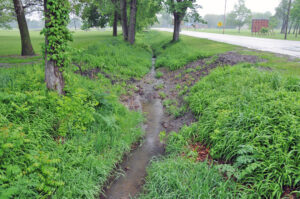
After fleeing the state of Missouri, members of The Church of Jesus Christ of Latter-day Saints soon settled the area now known as Nauvoo, Illinois. Known at that time as Commerce, the area was a mosquito-infested swampland on the bank of the Mississippi River. The History of the Church records that the Prophet Joseph Smith made the following observation about the site:
“The place was literally a wilderness. The land was mostly covered with trees and bushes, and much of it so wet that it was with the utmost difficulty a footman could get through, and totally impossible for teams.”

As he continued to consider moving to this area, the Prophet noted: “Commerce was so unhealthful, very few could live there; but believing that it might become a healthful place by the blessing of heaven to the Saints, and no more eligible place presenting itself, I considered it wisdom to make an attempt to build up a city.” So, in spite of the obvious difficulties they would encounter settling there, the Saints followed what Joseph counseled them to do.
One great challenge was the ague or malaria caused by mosquitos. That problem was greatly ameliorated by the ditches which drained the swamps letting much of the land dry out. Health challenges were always a concern at Nauvoo. One contemporary writer believed that “Commerce [Nauvoo] had failed to grow specifically because it was a place where malaria was endemic and particularly virulent.” Moreover, author George Givens has noted that “malaria reached such proportions in 1841 that coffin makers found it difficulty to keep up with the demand and Sidney Ridden was forced to preach a general funeral sermon.”
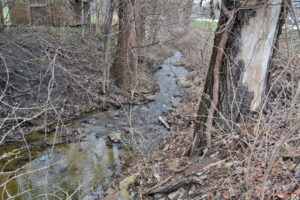
The website beautifulnauvoo.com explains that “Most of the southern end of the [Nauvoo] peninsula was swamp, and malarial mosquitoes infested the area. With hundreds of men out of work and scores dying from malaria, Joseph Smith organized a massive public works project to drain the swamp. Digging, blasting and picking their way from present day White Street south to the Mississippi River along Durphy Street, the Mormons drained the nearly 800 acre swamp, and made the entire Nauvoo Peninsula inhabitable. This canal was dug eight feet deep and eleven feet across for nearly three-quarters of a mile, and is still existent today, forming the western boundary of the Nauvoo State Park.”
Map and Directions
The best and easiest way to see an original drainage ditch in Nauvoo is to drive along Durphy Street between the bottom of Temple Hill and the entrance to Nauvoo State Park. The ditch parallels the street on the east side.
Ownership Status
The original ditch is on the western border of Nauvoo State Park running along Durphy Street which is open to the public whenever the park is. The is no charge to use the park or view the ditch.
Photos
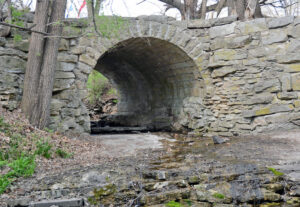
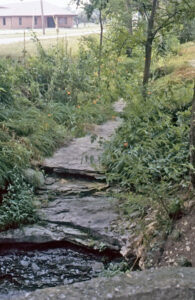
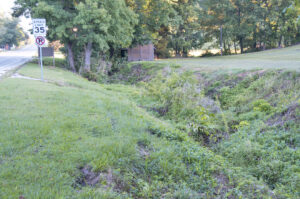
Articles & Resources
Resources
Joseph Smith, History of the Church 3:375.
Kyle M. Rollins, Richard D. Smith, M. Brett Borup, E. James Nelson, “Transforming Swampland Into Nauvoo, the City Beautiful,” BYU Studies Quarterly, 45:3, 125,ff.
George W. Givens, In Old Nauvoo: Everyday Life in the City of Joseph, 112-115.
https://www.beautifulnauvoo.com/nauvoo-during-the-mormon-period-(1839-1846).html
